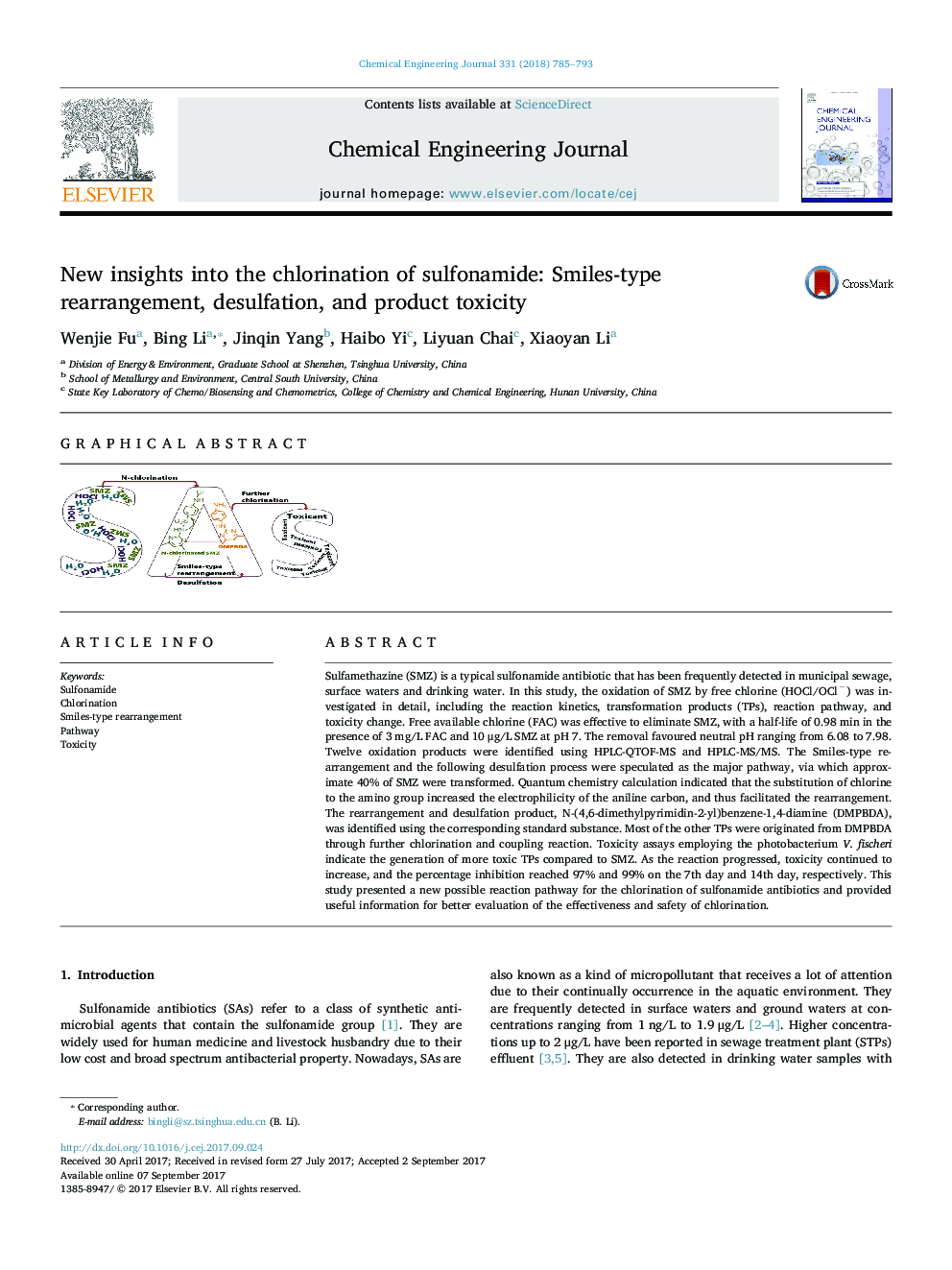| کد مقاله | کد نشریه | سال انتشار | مقاله انگلیسی | نسخه تمام متن |
|---|---|---|---|---|
| 4762820 | 1422947 | 2018 | 9 صفحه PDF | دانلود رایگان |
- The Smiles-type rearrangement is a major pathway for sulfamethazine chlorination.
- Quantum chemistry was used to speculate the promotion of Smiles-type rearrangement.
- The rearrangement product is the origin for a majority of down-stream products.
- Remarkable increase of toxicity was observed after chlorination.
Sulfamethazine (SMZ) is a typical sulfonamide antibiotic that has been frequently detected in municipal sewage, surface waters and drinking water. In this study, the oxidation of SMZ by free chlorine (HOCl/OClâ) was investigated in detail, including the reaction kinetics, transformation products (TPs), reaction pathway, and toxicity change. Free available chlorine (FAC) was effective to eliminate SMZ, with a half-life of 0.98 min in the presence of 3 mg/L FAC and 10 μg/L SMZ at pH 7. The removal favoured neutral pH ranging from 6.08 to 7.98. Twelve oxidation products were identified using HPLC-QTOF-MS and HPLC-MS/MS. The Smiles-type rearrangement and the following desulfation process were speculated as the major pathway, via which approximate 40% of SMZ were transformed. Quantum chemistry calculation indicated that the substitution of chlorine to the amino group increased the electrophilicity of the aniline carbon, and thus facilitated the rearrangement. The rearrangement and desulfation product, N-(4,6-dimethylpyrimidin-2-yl)benzene-1,4-diamine (DMPBDA), was identified using the corresponding standard substance. Most of the other TPs were originated from DMPBDA through further chlorination and coupling reaction. Toxicity assays employing the photobacterium V. fischeri indicate the generation of more toxic TPs compared to SMZ. As the reaction progressed, toxicity continued to increase, and the percentage inhibition reached 97% and 99% on the 7th day and 14th day, respectively. This study presented a new possible reaction pathway for the chlorination of sulfonamide antibiotics and provided useful information for better evaluation of the effectiveness and safety of chlorination.
112
Journal: Chemical Engineering Journal - Volume 331, 1 January 2018, Pages 785-793
